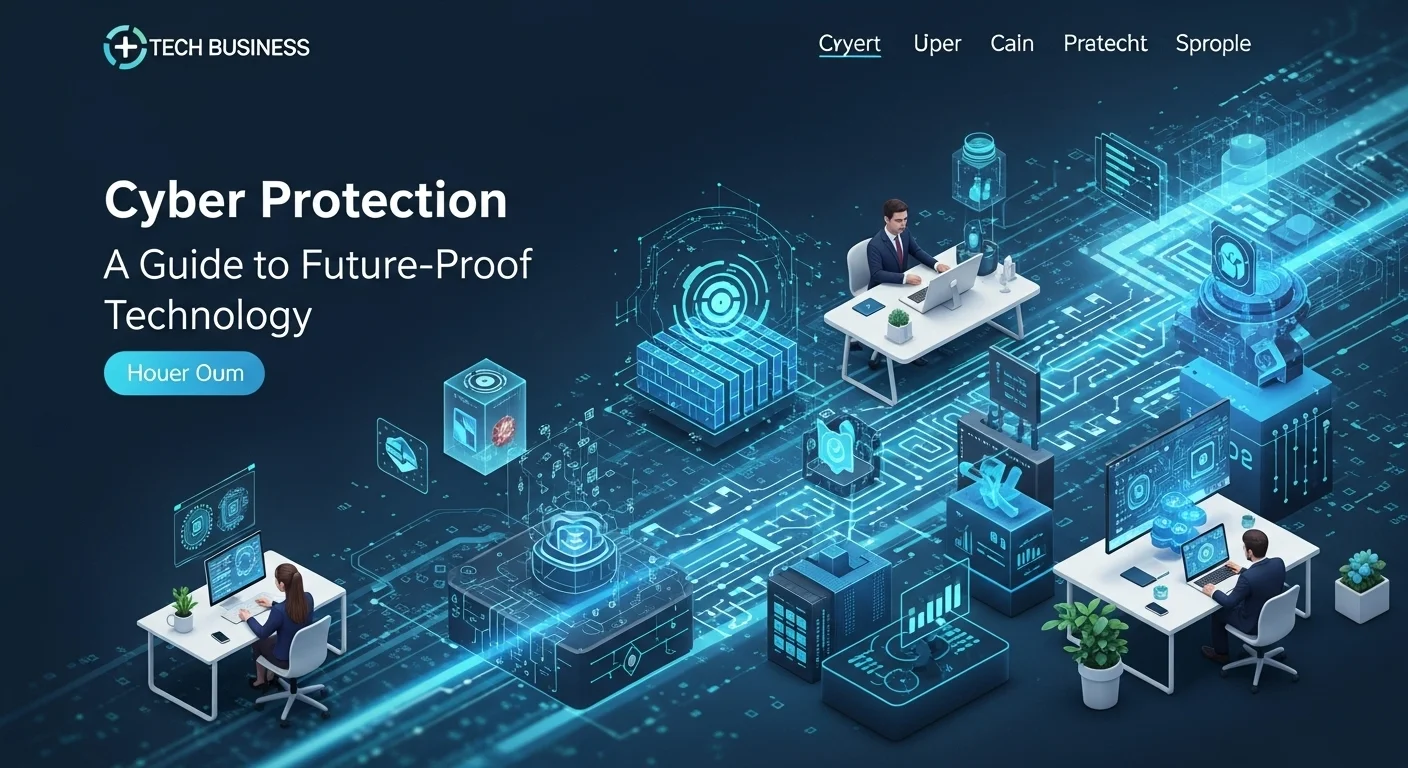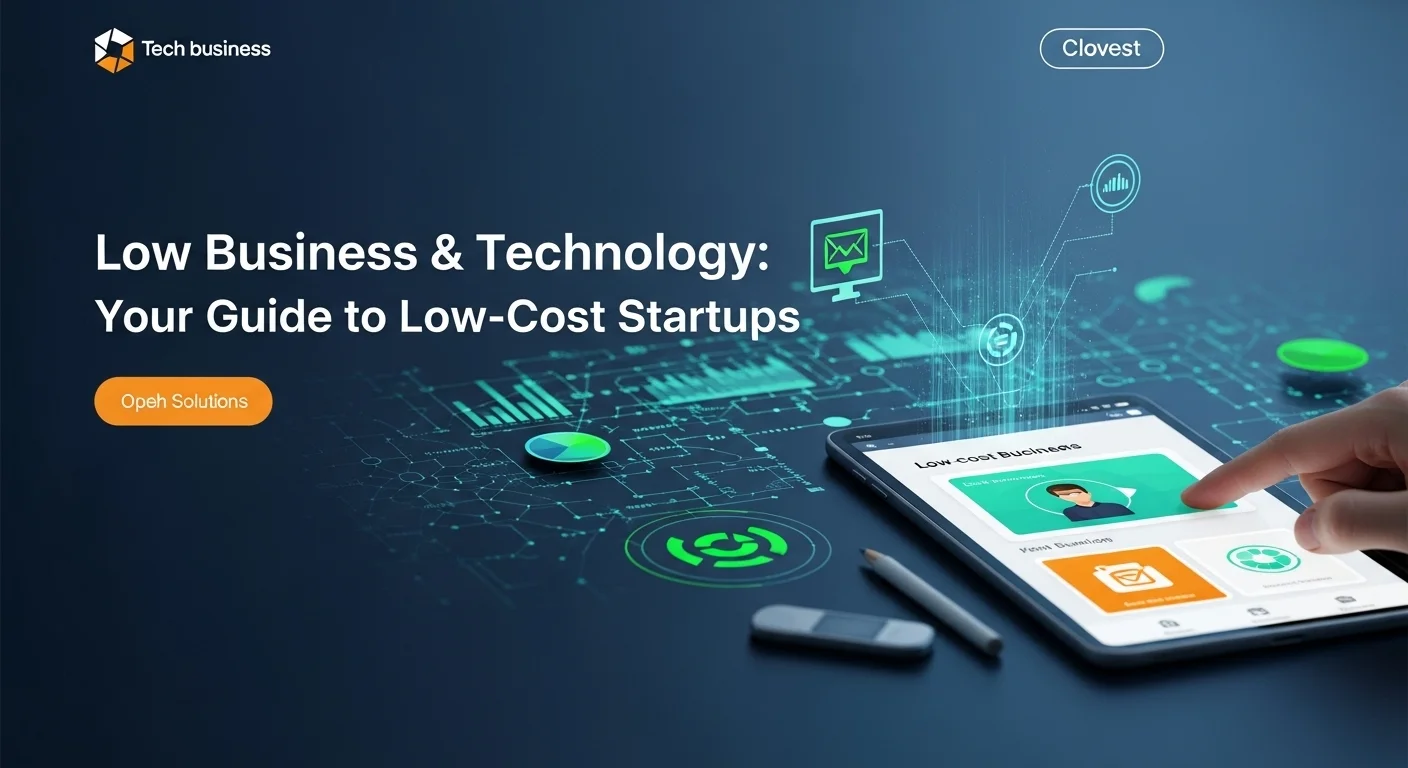Cyber Protection: A Guide to Future-Proof Technology

Executive Summary
In an era where technology is the backbone of global business, understanding and implementing robust Cyber Protection is no longer optional—it's essential. This article delves into the multifaceted world of digital defense, moving beyond traditional cybersecurity to a more holistic approach. We will explore the critical distinction between cybersecurity and cyber protection, highlighting how the latter integrates data protection, backup, and recovery into a single, resilient strategy. For businesses and tech enthusiasts, this means learning how to safeguard not just networks and systems, but the data itself, ensuring its integrity, availability, and confidentiality. We will cover the importance of a comprehensive strategy that includes advanced threat detection, employee training, and regulatory compliance. You'll discover how premier cyber protection services and leading cyber attack protection companies can fortify your operations, ensuring business continuity and building invaluable customer trust in an increasingly complex digital landscape. This guide is your first step towards mastering cyber data protection in the modern age.
Table of Contents
What is Cyber Protection and why is it important in Technology?
In today's hyper-connected world, the term 'cybersecurity' is ubiquitous. We hear it in boardrooms, news reports, and casual conversations about technology. However, a more comprehensive and arguably more critical concept is emerging as the cornerstone of digital resilience: Cyber Protection. While often used interchangeably, cyber protection represents a significant evolution from traditional cybersecurity. It’s a holistic strategy that fuses data protection with cybersecurity, creating a robust shield against a vast spectrum of threats. [8, 17] This paradigm shift is not merely semantic; it reflects a deeper understanding of the modern digital ecosystem, where the data itself is the most valuable asset, and its protection is paramount for survival and success.
At its core, cybersecurity focuses on defending networks, devices, and systems from malicious attacks. [16] It involves firewalls, antivirus software, and intrusion detection systems—all designed to build a perimeter and stop attackers from getting in. [1] Cyber Protection, on the other hand, acknowledges that breaches are not a matter of 'if' but 'when'. It broadens the scope to include not just the prevention of attacks but also the safety, accessibility, and integrity of data, even when defenses are compromised. [17] This is the crucial intersection of cyber security and data protection. A company might have the world's best firewall, but if an employee accidentally deletes a critical database and there's no backup, the business is still crippled. Cyber protection addresses this by integrating backup, disaster recovery, and data management into the security framework. It ensures that no matter the disruption—be it a ransomware attack, hardware failure, human error, or natural disaster—the data remains safe, recoverable, and accessible.
The importance of this integrated approach in technology cannot be overstated. We live in an age of data proliferation. The rise of the Internet of Things (IoT), cloud computing, and Artificial Intelligence (AI) means that businesses are generating and relying on more data than ever before. [5] This data is the lifeblood of modern enterprises, powering everything from customer relationship management and product development to financial forecasting and strategic decision-making. Consequently, the loss or compromise of this data can be catastrophic, leading to devastating financial losses, severe reputational damage, and legal penalties from failing to comply with regulations like GDPR or CCPA. [11, 22] Therefore, a modern defense strategy must focus on cyber data protection, treating data as the central element to be secured.
The Business Imperative for Holistic Cyber Protection
For businesses, embracing cyber protection is a strategic imperative. The threat landscape is evolving at an unprecedented rate. Cybercriminals are more sophisticated, organized, and well-funded than ever. They employ advanced tactics, from AI-powered malware that can adapt to defenses to complex social engineering schemes that exploit the human element. [33] Relying solely on preventative cybersecurity measures is like building a fortress with a single wall; a determined adversary will eventually find a way through. This is where the value of comprehensive cyber protection services becomes evident. These services offer a multi-layered defense that anticipates and prepares for failure.
Consider the impact of a successful ransomware attack. A traditional cybersecurity approach might fail to prevent the initial intrusion. The ransomware encrypts critical files, bringing operations to a standstill. The attackers demand a hefty ransom, leaving the business with a terrible choice: pay the criminals (with no guarantee of data recovery) or face prolonged downtime and data loss. A cyber protection strategy, however, changes the calculus. While the initial breach is still a serious incident, the integrated data protection component means the company has secure, recent, and easily accessible backups of all encrypted data. Instead of negotiating with criminals, the business can focus on eradicating the malware, restoring the data from backup, and resuming operations, often within hours rather than weeks. This resilience is the hallmark of effective data protection cyber security.
Furthermore, the proactive nature of cyber protection extends to regulatory compliance and building customer trust. In nearly every industry, there are strict regulations governing how customer data is handled and protected. [19] A breach that exposes sensitive customer information can trigger massive fines and legal action. By implementing a robust cyber protection framework that includes encryption, access controls, and regular audits, businesses can demonstrate due diligence and a commitment to safeguarding data, which is crucial for compliance. [14] This commitment also becomes a powerful competitive differentiator. In an age of frequent data breaches, consumers are increasingly wary of which companies they trust with their personal information. A business that can publicly and confidently articulate its strong cyber security and data protection posture can build a reputation for reliability and security, attracting and retaining customers who value their privacy. [25]
Choosing the Right Defense: The Role of Cyber Attack Protection Companies
Navigating the complex world of digital defense can be daunting, especially for small and medium-sized businesses (SMBs) that often lack dedicated IT security teams. [12] This is where specialized cyber attack protection companies play a vital role. These firms offer the expertise, technology, and manpower to implement and manage a comprehensive cyber protection strategy. When selecting a partner, it's crucial to look beyond basic antivirus and firewall management. A true cyber protection provider will offer an integrated suite of services.
Key offerings to look for include:
- Managed Detection and Response (MDR): 24/7 monitoring of networks and endpoints to detect threats in real-time, combined with expert response to contain and neutralize them.
- Advanced Endpoint Protection: Utilizing next-generation antivirus (NGAV) and endpoint detection and response (EDR) tools that use AI and behavioral analysis to stop sophisticated malware. [20]
- Secure Backup and Disaster Recovery (BDR): Automated, encrypted backups of all critical data and systems, with rapid recovery capabilities to ensure business continuity.
- Vulnerability Management: Proactive scanning of systems to identify and patch security weaknesses before they can be exploited.
- Security Awareness Training: Educating employees to recognize and resist phishing, social engineering, and other tactics that target them directly. [49]
- Compliance Management: Tools and expertise to help navigate and adhere to industry-specific and general data protection regulations.
Leading cyber attack protection companies like CrowdStrike, Palo Alto Networks, and Fortinet provide many of these advanced solutions, offering platforms that unify security and data management. [4, 6] For many businesses, the ideal solution is a partnership with a Managed Service Provider (MSP) that specializes in cyber protection. These MSPs can bundle best-in-class technologies and provide the ongoing management and expertise needed to maintain a strong security posture. They act as an outsourced security team, allowing the business to focus on its core operations while ensuring its digital assets are protected by a holistic and resilient cyber data protection strategy. The integration of these elements—preventative security, real-time detection, rapid response, and robust recovery—is the essence of modern cyber protection, providing the resilience necessary to thrive in the complex technological landscape of the 21st century.

Complete guide to Cyber Protection in Technology and Business Solutions
Building a resilient digital presence requires a deep understanding of the technical methods and business strategies that form the foundation of modern cyber protection. It’s a multifaceted discipline that goes far beyond installing software; it involves creating a culture of security, implementing layered technological defenses, and preparing for inevitable incidents. This guide provides a comprehensive overview of the essential components, from technical controls to business-level planning, offering a roadmap for organizations aiming to achieve true digital resilience. The ultimate goal is to create an environment where data protection cyber security is not an afterthought but a core tenet of the operation.
Technical Methods: The Building Blocks of Digital Defense
A robust cyber protection strategy is built on a foundation of sophisticated technical controls. These are the tools and technologies that actively defend against, detect, and respond to threats. A layered approach, often called 'defense-in-depth', is critical, as it ensures that if one layer is breached, others are in place to stop the attack's progression.
1. Network Security: The first line of defense is securing the network perimeter. This includes:
- Next-Generation Firewalls (NGFWs): Unlike traditional firewalls that only inspect ports and protocols, NGFWs provide deeper inspection of traffic, including application-level awareness, integrated intrusion prevention systems (IPS), and threat intelligence feeds. [37] Companies like Fortinet are pioneers in this space. [6]
- Network Segmentation: Dividing a network into smaller, isolated segments. This contains breaches by preventing attackers from moving laterally across the entire network. If one segment is compromised, the others remain secure.
- Secure Wi-Fi and VPNs: Enforcing strong encryption (WPA3 for Wi-Fi) and requiring the use of a Virtual Private Network (VPN) for remote access ensures that data transmitted wirelessly is protected from eavesdropping.
2. Endpoint Protection: Every device connected to the network (laptops, servers, smartphones) is an endpoint and a potential entry point for attackers. Modern endpoint protection is crucial:
- Endpoint Detection and Response (EDR): EDR solutions continuously monitor endpoints to detect suspicious behavior. They provide the visibility needed to investigate threats and can automatically respond by isolating an infected device from the network. CrowdStrike is a leader in the EDR market. [32]
- Next-Generation Antivirus (NGAV): Using AI and machine learning, NGAV can identify and block both known and unknown malware, including fileless attacks that don't rely on traditional malicious files. [20]
3. Data Encryption and Protection: Protecting the data itself is the ultimate goal. This is where the concept of cyber data protection truly comes to life.
- Encryption at Rest and in Transit: Data must be encrypted both when it is stored on a server or hard drive (at rest) and when it is moving across the network or internet (in transit). [14, 28] This ensures that even if data is intercepted or stolen, it is unreadable without the decryption key.
- Data Loss Prevention (DLP): DLP tools are policies and technologies that prevent sensitive data from leaving the organization's network without authorization. They can scan emails and file transfers for confidential information (like credit card numbers or intellectual property) and block them. [19]
4. Identity and Access Management (IAM): A significant number of breaches are caused by compromised credentials. Strong IAM is non-negotiable.
- Multi-Factor Authentication (MFA): Requiring a second form of verification (like a code from a mobile app) in addition to a password makes it exponentially harder for attackers to gain unauthorized access. [1]
- Principle of Least Privilege (PoLP): Employees should only have access to the data and systems absolutely necessary to perform their jobs. [28] This minimizes the potential damage if an account is compromised.
- Zero Trust Architecture: This modern security model operates on the principle of 'never trust, always verify'. [7, 15] It requires strict verification for every person and device trying to access resources, regardless of whether they are inside or outside the network perimeter.
5. Secure Backup and Disaster Recovery: This is the component that truly distinguishes cyber protection from standard cybersecurity. It's the ultimate safety net.
- The 3-2-1 Rule: A best practice for backups. Keep at least three copies of your data, on two different types of media, with one copy stored off-site (preferably in the cloud and immutable, meaning it cannot be altered or deleted).
- Regular Testing: Backups are useless if they don't work. Regular testing of data recovery procedures is essential to ensure they can be relied upon in a real emergency.
Business Techniques: Weaving Security into the Corporate Fabric
Technology alone is not enough. Effective cyber protection requires strategic planning and a commitment from the entire organization, from the C-suite to the front lines. This is where the synergy between cyber security and data protection is forged through policy and culture.
1. Develop a Comprehensive Cyber Protection Plan: This is the master document that guides all security efforts. It should begin with a thorough risk assessment to identify key assets, potential threats, and vulnerabilities. [12] The plan should outline the security controls in place, define roles and responsibilities, and establish clear procedures for handling security incidents.
2. Incident Response (IR) Planning: When a breach occurs, a clear, pre-defined plan is essential to minimize damage. The IR plan should detail the steps to be taken, from initial detection and containment to eradication and recovery. It should also include a communication plan for notifying stakeholders, customers, and regulatory bodies. Having this plan ready prevents panic and ensures a swift, coordinated response.
3. Employee Training and Awareness: Humans are often the weakest link in the security chain, but they can also be the strongest line of defense. [14] Regular, ongoing training is vital to educate employees about threats like phishing and social engineering. Phishing simulations, where fake phishing emails are sent to test employees, can be a highly effective training tool. A strong security culture encourages employees to be vigilant and report suspicious activity without fear of blame.
4. Vendor and Supply Chain Risk Management: Your organization's security is only as strong as your partners'. Many high-profile attacks have originated through a compromised third-party vendor. [8] It's crucial to vet the security practices of all vendors and partners who have access to your network or data. This includes contractual requirements for security and regular audits.
5. Choosing the Right Partners: For many businesses, partnering with expert cyber attack protection companies or Managed Security Service Providers (MSSPs) is the most effective approach. When evaluating potential cyber protection services, it's important to look for providers that offer a holistic solution. They should not only supply technology but also provide the strategic guidance and expertise to integrate it into your business processes. A good partner will work with you to understand your specific risks and tailor a strategy that aligns with your business objectives, ensuring a comprehensive approach to cyber data protection.
By combining these technical methods with sound business strategies, organizations can build a formidable defense. This complete approach to data protection cyber security doesn't just prevent attacks; it builds resilience, ensuring that the business can withstand disruptions and continue to operate securely and effectively in a hostile digital world.

Tips and strategies for Cyber Protection to improve your Technology experience
In the digital age, achieving a state of robust cyber protection is not a one-time project but an ongoing process of vigilance, adaptation, and continuous improvement. For businesses and individuals alike, enhancing your technology experience means embedding security into daily habits and strategic decisions. This section offers practical tips and advanced strategies to fortify your defenses, leveraging best practices, cutting-edge tools, and a deeper understanding of the evolving threat landscape. By focusing on these actionable steps, you can transform your approach from a reactive defense to a proactive state of resilience, making cyber data protection an integral part of your technological DNA.
Foundational Best Practices: The Daily Habits of Digital Hygiene
Just as personal hygiene prevents illness, digital hygiene prevents a majority of common cyber threats. These foundational practices are simple yet incredibly effective. Consistently applying them is the first and most critical step towards a secure technology experience.
- Cultivate Strong Password Policies: Weak or reused passwords are a primary vector for attacks. Enforce the use of long, complex passwords (at least 12 characters with a mix of uppercase, lowercase, numbers, and symbols). [1] Better yet, encourage the use of passphrases, which are longer and easier to remember. Most importantly, use a unique password for every single account.
- Embrace Password Managers: Expecting employees or yourself to remember dozens of unique, complex passwords is unrealistic. A password manager is an essential tool that securely stores all your passwords and can generate strong, random ones for new accounts. This single tool dramatically improves password security.
- Enable Multi-Factor Authentication (MFA) Everywhere: MFA is one of the most effective controls for preventing unauthorized access. [26] Activate it on all critical accounts, including email, banking, cloud services, and social media. Even if an attacker steals your password, they won't be able to log in without the second factor.
- Practice Vigilance Against Phishing: Phishing remains a top threat. Train yourself and your team to be skeptical of unsolicited emails, especially those creating a sense of urgency or asking for credentials. [31] Always verify the sender's address and hover over links to see the actual destination URL before clicking. When in doubt, do not click.
- Maintain Software and System Updates: Software updates often contain critical security patches for newly discovered vulnerabilities. [1] Enable automatic updates whenever possible for operating systems, web browsers, and other applications to ensure you are always running the latest, most secure version.
- Secure Your Network: Change the default administrator password on your router. Use a strong, unique password for your Wi-Fi network and ensure it is protected with WPA3 encryption, the latest standard.
Advanced Business Strategies and Tools
For businesses, foundational hygiene must be supplemented with strategic initiatives and advanced tools to address more sophisticated threats. This is where partnering with skilled cyber attack protection companies can provide significant value.
1. Implement a Zero Trust Framework: Transitioning to a Zero Trust model is a strategic shift. Instead of implicitly trusting users and devices inside the network, this framework assumes no trust and verifies every access request. [15, 19] This involves implementing strict access controls, network micro-segmentation, and continuous monitoring. It’s a cornerstone of modern data protection cyber security because it drastically limits an attacker's ability to move through your network after an initial breach.
2. Leverage the Power of AI and Machine Learning: The future of defense lies in automation and intelligence. Modern security solutions increasingly use AI to detect threats that would be impossible for humans to find. [10, 20] AI-powered tools can analyze vast amounts of data from network traffic, endpoint activity, and user behavior to identify anomalies and predict potential attacks in real-time. [23] When selecting cyber protection services, prioritize those that have a strong AI and machine learning component in their threat detection and response capabilities.
3. Conduct Regular Risk Assessments and Penetration Testing: You can't protect against what you don't know. A regular risk assessment helps identify your most critical assets and the most likely threats against them. [12] To take this a step further, periodic penetration testing (or 'pen testing'), where ethical hackers are hired to try and break into your systems, provides an invaluable real-world test of your defenses. It reveals weaknesses in your technology and processes before malicious actors can exploit them.
4. Build a Resilient Backup and Recovery Strategy: Effective cyber security and data protection means preparing for the worst. Your backup strategy should be automated, comprehensive, and tested. The 3-2-1 rule is the gold standard: three copies of your data, on two different media, with one off-site. For ultimate protection against ransomware, one of these copies should be 'immutable' or 'air-gapped', meaning it cannot be altered or deleted by an attacker who has compromised your primary network.
5. Invest in Your People: The Human Firewall: Technology is only part of the solution. Your employees are a critical component of your defense. Go beyond basic annual training. Implement a continuous security awareness program with regular, engaging content, such as short videos, newsletters, and simulated phishing tests. [49] Foster a security-positive culture where employees feel empowered to report incidents and ask questions. This transforms your workforce from a potential liability into a vigilant human firewall.
6. Choose the Right Technology Partners: The market for security tools is vast and confusing. Partner with reputable vendors and service providers. When evaluating cyber attack protection companies, look for those with a proven track record, strong customer reviews, and a holistic approach that integrates multiple layers of security. For a deep dive into best practices and government-backed guidance, an excellent external resource is the Cybersecurity & Infrastructure Security Agency (CISA) website (cisa.gov), which offers a wealth of information for businesses of all sizes.
By combining these fundamental tips with advanced business strategies, you can significantly improve your technology experience, making it not only more efficient and productive but also more secure and resilient. True cyber data protection is about creating a multi-layered defense that protects your assets, empowers your people, and prepares your organization to face the digital challenges of tomorrow with confidence.
Expert Reviews & Testimonials
Sarah Johnson, Business Owner ⭐⭐⭐
The information about Cyber Protection is correct but I think they could add more practical examples for business owners like us.
Mike Chen, IT Consultant ⭐⭐⭐⭐
Useful article about Cyber Protection. It helped me better understand the topic, although some concepts could be explained more simply.
Emma Davis, Tech Expert ⭐⭐⭐⭐⭐
Excellent article! Very comprehensive on Cyber Protection. It helped me a lot for my specialization and I understood everything perfectly.



